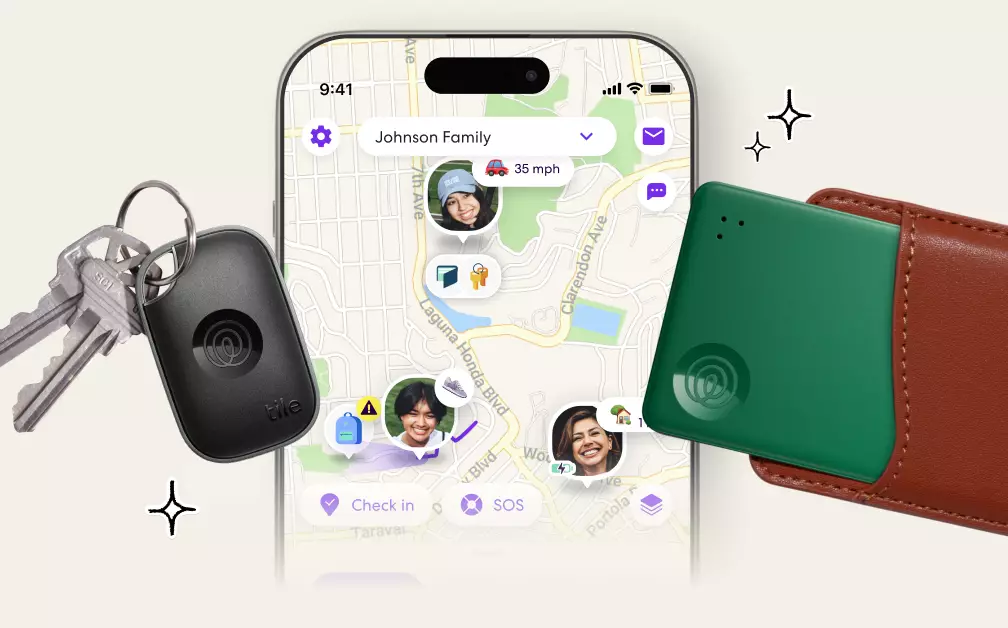In a technological landscape where efficiency and connectivity reign supreme, the marriage of Life360 and Tile is a monumental step forward. Over three and a half years since the $205 million acquisition of Tile, the family locator app Life360 has finally embedded Tile’s specialized item-tracking functionality into its primary platform. This dynamic integration isn’t just a cosmetic update; it represents a significant shift in how users will manage both personal relationships and their physical belongings in a seamless environment.
The latest features afford Life360 users the ability to locate loved ones in real time — a classic staple of the app — while now also keeping a sharp eye on essential possessions. Imagine knowing where your family members are, right alongside the location of your wallet, keys, and bags, all from one central hub. The compelling nature of this integrated functionality not only appeals to long-time Life360 users but also serves to attract Tile’s existing customers into the broader family tracking ecosystem.
Strategies for User Adaptation
One of the key elements of this integration is the strategy around user migration. By suggesting Tile users transition to the Life360 app, the company aims to consolidate its audience, ensuring that all tracking functionalities exist under one umbrella. This is smart not just from a business perspective, but from a user experience standpoint. A unified application enhances ease of use, reducing the cognitive load on users who previously had to toggle between two separate apps.
Moreover, the gradual rollout of these features has been carefully orchestrated to cushion the transition. Users will find navigational prompts guiding them through the new functionalities, reducing uncertainty and potential frustration. In an era where tech companies frequently launch half-baked features, Life360’s approach stands as a commendable model of incremental rollout and customer engagement.
The Competitive Landscape
Despite this robust integration, one cannot ignore the broader competitive paradigm. Life360 is navigating a rapidly evolving market replete with contenders such as Chipolo and Apple’s own AirTag. These competitors offer similar functionalities, often providing effortless collaboration with Apple’s and Google’s robust finding networks. The challenge for Life360 now isn’t merely adopting new features but ensuring that they stand out in a sea of options. The flagship app now has the potential to evolve into the largest locating network, but only if it effectively capitalizes on the moment.
The question remains whether Life360 can maintain its user numbers, which, while impressive at 83.7 million global monthly active users, may face challenges from agile newcomers. The need for continuous innovation and an unwavering focus on user experience can’t be overstated. Life360 must remain vigilant, constantly refining its offerings as user expectations evolve.
Emphasizing Security and Convenience
Another intriguing aspect of this merger is the emphasis on security and convenience. With features like the SOS button and push notifications alerting users when their Tile-equipped items are left behind, Life360 is compellingly woven into the framework of safety. The prospect of effortless alerts on misplaced items ensures that users are less likely to face the dread of losing valuable objects. Furthermore, it imbues a sense of confidence, making everyday challenges lighter to bear.
While some may argue that users could simply revert to traditional tracking methods, the appeal of a flawlessly integrated digital life — where the app not only tracks people but also items — offers a modern solution that resonates with our fast-paced lifestyles. Life360’s melding of item tracking and family safety can potentially foster a deeper relationship between users and technology, making the app indispensable in daily life.
Future Implications for Life360 and Tile
As Tile’s functionality becomes fully integrated into Life360, the conversation about the future of the standalone Tile app inevitably arises. While company representatives assert that there are no immediate plans to shut down the Tile app, practicality may dictate a more streamlined approach as the two user bases blend. For now, Life360 must maintain transparency and patience, working to ensure users feel valued and secure in their choice, regardless of the platform they ultimately use.
In larger terms, this partnership may set a precedent for other tech firms who grapple with user retention amid competitive pressures. Life360 and Tile’s approach in merging two distinct yet related formats showcases how collaboration can lead to innovation. The fusion, while still in its infancy, may very well redefine how social connections and physical belongings are tracked in an increasingly digital world. The imperative is clear: adapt or risk obsolescence. As the digital age advances, Life360 seems quite poised to ride the waves of change to become a pivotal player in family safety and asset management.

